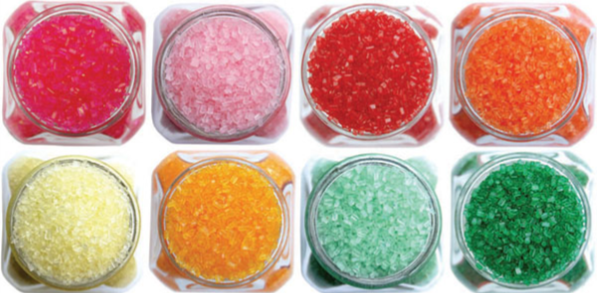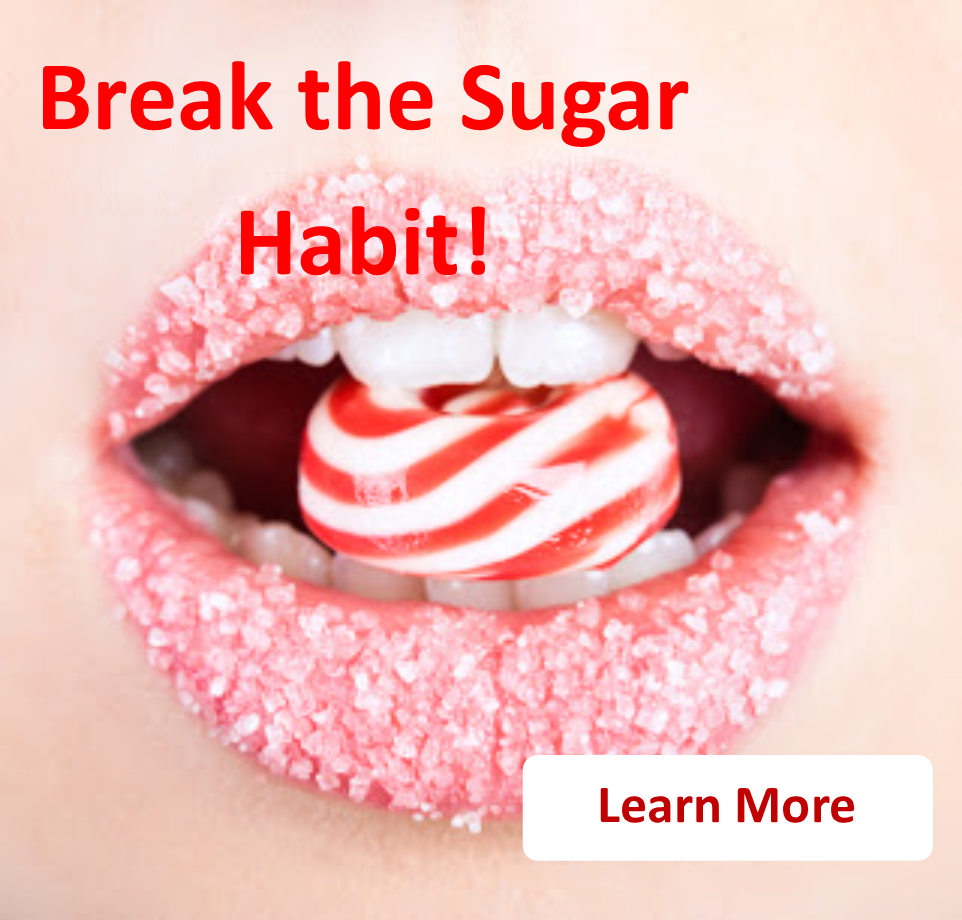I get a lot of questions about sugars and which are okay to eat and which are not.

Most of the questions have to do with finding a good substitute to take the place of white sugar. Sorry to say, but the short answer is that there are no good substitutes either in natural sugars or artificial sweeteners, with one exception (see below). Yes, sugars like honey and maple syrup do have a small amount of nutritional value to them, but that nutritional value does not offset what these sweeteners do to your blood sugar levels.
Let’s take a look at both natural and artificial sweeteners and see what they do for our health for a complete guide to sugars.
What is a sugar?
The first thing you need to know is what makes a food a sugar. While my book, , has a much more complete description, I will briefly describe what sugars are here.
Sugars are carbohydrates and are the simplest form of carbohydrates; you can think of the sugars as building blocks on which all other carbohydrates are built. Sugars are generally either monosaccharides (mono meaning “one” and saccharide meaning “sugar”) or disaccharides (di meaning “two”) and consist of either one or two molecules stuck together. You have probably heard of many of these sugars: fructose, glucose, maltose, sucrose…
From the point of view of your body, these sugars all do the same thing: raise your blood sugar. Your body has a preference for glucose and will convert all the other sugars into glucose so that the cells of the body can use the energy stored in the glucose molecule.
Guide to Sugars
I’m going to break the sugars into two different categories: processed and natural. In truth, all sugars are processed because they don’t appear in nature in such a concentrated form (except for honey – which is processed by bees). You will, however, see many manufactures use the so-called natural sugars as a selling point for their products, so I thought it would be helpful to separate them for you.
PROCESSED SUGARS
- Glucose: when we talk about blood sugar, this is what we are measuring. While it would be nice to be able to measure all sugars in the blood stream, this is all we can currently measure. Glucose is easily taken up by the cells of the body and used as a fuel source for all energy production.
- Fructose: Fructose is the twin brother to glucose and is the so-called “fruit sugar” because it is found in many fruits. The chemical structure of fructose is identical to glucose, it just has a different shape. That small difference is actually a big deal. Fructose tastes much sweeter that glucose and is used by the body differently.
- Sucrose: Sucrose is white table sugar and is a glucose molecule and a fructose molecule stuck together to form a disaccharide.
- Maltose: is two glucose molecules stuck together. It usually forms in the gut when starches are digested and is an important step in the creation of alcohol. Manufactures do use maltose in foods, but it is about 1/3 as sweet as sucrose.
- Lactose: Lactose is the sugar found in milk and milk products.
- High fructose corn syrup: High fructose corn syrup is the sweetener of choice for many food manufactures. It is cheap and tastes sweeter than sucrose. There are many scientists who are starting to question the health hazards of high fructose corn syrup.
- Maltodextrin: Maltodextrin is a polysaccharide (larger than a disaccharide) that is easily broken down into glucose on digestion. It is generally used as a sort of “glue” when food manufactures are looking to hold a product together.
- Dextrose: This is the same as glucose.
- Dextrin: Dextrins are larger chains of glucose molecules stuck together, an example is maltodextrin.
- Brown Sugar: Brown sugar is either slightly unrefined white sugar or white sugar that has molasses added back into it.
NATURAL SUGARS
- Turbinado sugar: Turbinado sugar is made by pressing sugar cane and then evaporating the water from the juice.
- Raw Sugar: There are many forms of raw sugar (including Turbinado) and they are all mostly the same: made from sugar cane and then evaporated.
- Honey: Honey is the original processed sugar it is about 1/2 fructose and 1/2 glucose.
- Agave: Agave come from same plant that gives us tequila. It is said to not raise blood sugar, but what they mean is it does not raise blood glucose because agave is mostly fructose.
- Maple Syrup: Made from tree sap and is not a significant source of nutrients besides iron and zinc.
- Molasses: Molasses is byproduct of sugar manufacturing. It does contain iron in significant amounts, but much better to get iron from other sources.
- Evaporated Cane Sugar: The same as raw sugar or Turbinado sugar.
- Fruit juice concentrate: This sugar is mostly fructose made by concentrating different juices (usually grape).
- Xylitol: Xylitol is almost a fiber as it is derived from the fibrous portion of corn husks and peanuts. It is less sweet than sugar and can actually inhibit cavities. It shows up in a lot of natural chewing gums.
Which Should you be Eating?
Looking over all of the sugars above, which do you want to put into your diet? The answer is that, no matter the name, no matter the source, no matter if they are “natural” or not, they all behave the same in your body. So while food manufactures get a lot of mileage off of stating that they are using “natural sugars,” there is no health benefits to honey, Turbinado or other sugars.
If you are looking to avoid sugars, none of the above will work for you. If you are looking for a substitute, I suggest Stevia. Stevia, a herb, and has actually been shown to improve insulin sensitivity.
There you go: a complete guide to sugars. I’m guessing that I have missed a few, feel free to add them to the comment section below.












I have been reading your list of what you can and cant eat and there seem to be a lot of high sugar foods including fruit, dairy etc. Should we not be aiming to cut these out altogether? Is there a recommended daily allowance of sugar to aim for? For example, my milk is 5g sugar per 100ml when soya is les than 1g per 100ml. Also, you said avoid grains but there is less than 1g of sugar in my oatmeal cereal and roughly 1g in the pitta breads im having for lunch. Surely the fruit you have included has more natural sugar then this?
Louise, the issue is not the amount of sugar in a food, but how it acts in your body. For example, high sugar fruits that have a lot of fiber will not raise your blood sugar much, this all has to do with the glycemic index of foods. You can read more about glycemic index on my site and in the free e-book.
Can I use Splenda?
Alana,
I don’t think artificial sweeteners are a good choice. They often don’t do what they are supposed to do: help you lose weight, and they are harmful chemicals to be putting in your body. If you are looking for a good substitute, look to Stevia.